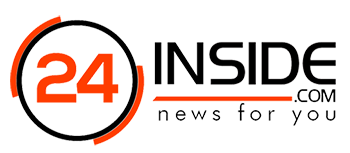Artificial intelligence, or AI, is quickly proving to be an indispensable tool in the medical field. From diagnosing diseases and suggesting treatments to improving our ability to stay healthy through customized nutrition and exercise regimens, AI can help us manage our health like never before.
You can even get an online prescription for small issues to big diseases with just a few clicks. Here are seven tasks that AI will solve in healthcare, offering both doctors and patients huge benefits.
This article highlights the following ways that AI will help solve in the healthcare industry:
- Revolutionizing medical health records
- Clinical Diagnostics
- Speedy ophthalmology care
- Matching patients to physicians and hospitals
- AI in medical research and development
- Epidemiology and prevention of outbreaks
- Telemedicine and patient monitoring
Let’s delve right in!
1. Revolutionizing Medical Health Records
Large, integrated healthcare delivery networks often use electronic health record systems that are viewed as monolithic, inflexible, user-unfriendly, and expensive to configure. It takes a lot of effort, money, and expert consulting to implement, support, and optimize them, and they are almost always purchased from commercial vendors.
For efficiency, some medical facilities have begun employing “scribes” to take notes during doctor visits while doctors give their full attention to patients. Several companies are currently developing digital scribes, AI-powered machine-learning algorithms designed to take a doctor-patient conversation, dissect it, and then use the gleaned information to populate the patient’s electronic medical record (EMR).
Additionally, this can aid in the fight against physician burnout and the effort to standardize data entry inherent to electronic medical records.
2. Clinical Diagnostics
AI can be incorporated into many steps of diagnostic imaging, including image acquisition, processing, interpretation, follow-up care planning, and data storage. Artificial intelligence can enhance image quality during an imaging study.
That said, Google, Jvion, Enlitic, and many other companies are working on image interpretation algorithms based on artificial intelligence. Google, for instance, works with healthcare delivery systems to use big data to construct prediction models that can alert doctors to sepsis and heart failure.
These two conditions carry a high risk of severe complications if left untreated. Patients who are at the most significant risk and those who are most likely to benefit from a given treatment protocol can both be more easily identified with the aid of AI tools.
All these have the potential to be incorporated into EHRs to aid in making decisions. It would appear that with the help of AI, diagnostic accuracy is increased, as both bias and subjectivity are reduced.
When analyzing cases, AI is always consistent. And greater precision in diagnosis and treatment, with fewer mistakes and more precise findings, will lead to direct savings.
3. Speedy Ophthalmology Care
Ophthalmology is the branch of medicine that focuses on eye diseases and injuries. With that being said, studies show that healthcare systems are under increasing pressure to provide emergency ophthalmology care.
Populations are getting older at an alarming rate, putting a strain on public healthcare systems that are ill-equipped to provide timely access to specialists. Some eye diseases requiring prompt treatment include cataracts, macular degeneration, diabetic retinopathy, glaucoma, and macular degeneration.
Delays in ophthalmology treatment can cause irreversible harm like loss of visual field and visual acuity. Cases involving new forms of artificial intelligence and deep learning aim to speed up population screenings and fill in diagnostic gaps. In 2018, the FDA approved an AI system to diagnose diabetic retinopathy independently.
The fundus images are captured by the IDx-DR system and analyzed in less than a minute. Clinical trials showed an 87 percent sensitivity in identifying DR symptoms in patients and a 90 percent specificity.
4. Matching Patients to Physicians and Hospitals
With the ever-growing number of patients and physicians, it’s becoming increasingly difficult for patients to find the right doctor for them. Matching patients to the right physicians and hospitals is complex and time-consuming, but AI can help.
By analyzing patient data, AI can identify patterns and relationships that humans might miss. This information can then be used to match patients with the physicians and hospitals that are best suited to their needs. AI can help by collecting data on patients’ symptoms and preferences, then matching them with the best doctor for their needs.
The algorithm can also consider factors like location, insurance coverage, bed availability, and wait times. It will only get easier as more people adopt this technology and use it to improve their lives.
5. AI in Medical Research and Development
Artificial intelligence is typically used in medical research for data analysis and pattern recognition. In addition to reducing costs and enhancing results, analyzing this data can be done much more quickly, accurately, and cheaply than with more conventional analysis methods.
Artificial intelligence can also combine disparate datasets and sift through mountains of scientific literature in search of helpful research. For instance, “Eve” was created by researchers at the Universities of Cambridge and Manchester to aid in the optimization of this resource-intensive and expensive procedure. To combat the spread of drug-resistant malaria, Eve 2018 identified a compound found in soaps and toothpaste as a potential new weapon.
Scientists at the Institute of Cancer Research created a one-of-a-kind CanSAR database that integrates genetic and clinical information from individual patients. CanSAR uses machine-learning algorithms to predict promising new cancer drugs once it has compiled and “translated” this massive amount of data into a common language.
Indeed, in the life sciences industry, big data is already making waves and has the potential to completely transform R&D.
6. Epidemiology and Prevention of Outbreaks
Epidemiologists employ AI-powered statistical modeling to foresee and forestall the spread of disease. Viterbi School of Engineering at the University of Southern California aided the development of an algorithm that can slow down the spread of infectious diseases.
In another example, more than 6.4 million SARS-CoV-2 sequences were analyzed by a novel computational model to uncover patterns among the mutations that promote the global spread of a new viral strain.
PyR0 is a model that looked at how new strains of viruses emerged and spread from December 2019 to January 2022. Based on this information, it determined the mutational pathways and time frames necessary for variants like Delta and Omicron to become the norm.
The model, described by a group of researchers in May’s Science, could inform public health programs of potentially dangerous lineages in advance. Similarly, AIME Inc, an epidemiology and technology company, has created a tool to forecast the spread of dengue fever in real time. Trials in Malaysia showed an accuracy rate of up to 84% for this product, the result of 2.5 years of research.
7. Telemedicine and Patient Monitoring
Smartwatches and other wristbands offer a convenient and inexpensive way to monitor vital signs like heart rate and blood oxygen saturation levels. Photoplethysmography (PPG) is the basis for the newest generation of wearable technology, which uses the transmission of light through the skin to measure vital signs.
Given that more than 40% of countries have fewer than 10 doctors per 10,000 people (WHO Global Reports), wearable devices in clinical settings can improve public health and patient monitoring. Doctors and caregivers can keep tabs on their patient’s health status at all times with the help of wearable telemedicine devices.
These gadgets aid in monitoring patients’ vital signs and can detect abnormalities too subtle for human doctors to catch. When a monitoring device detects a symptom of a disease, alerts are sent so that corrective action can be taken promptly.
A Take Home
AI improves healthcare providers’ capacity to learn about and respond to individuals’ routines and changing requirements over time. Further, AI aids health workers in comprehending how to provide enhanced feedback, direction, and support for maintaining health. Moreover, it puts people in charge of their health and well-being.
Author Bio: Merry is a singer, songwriter, blogger, book marketer, and recovering worship leader. For two years, Merry had the amazing opportunity to minister to Christian youth with her Mom, and also serve as a Sunday school teacher. She is now happily living with her four sisters and both parents. She also enjoys traveling, photography, and playing with her two dogs.





